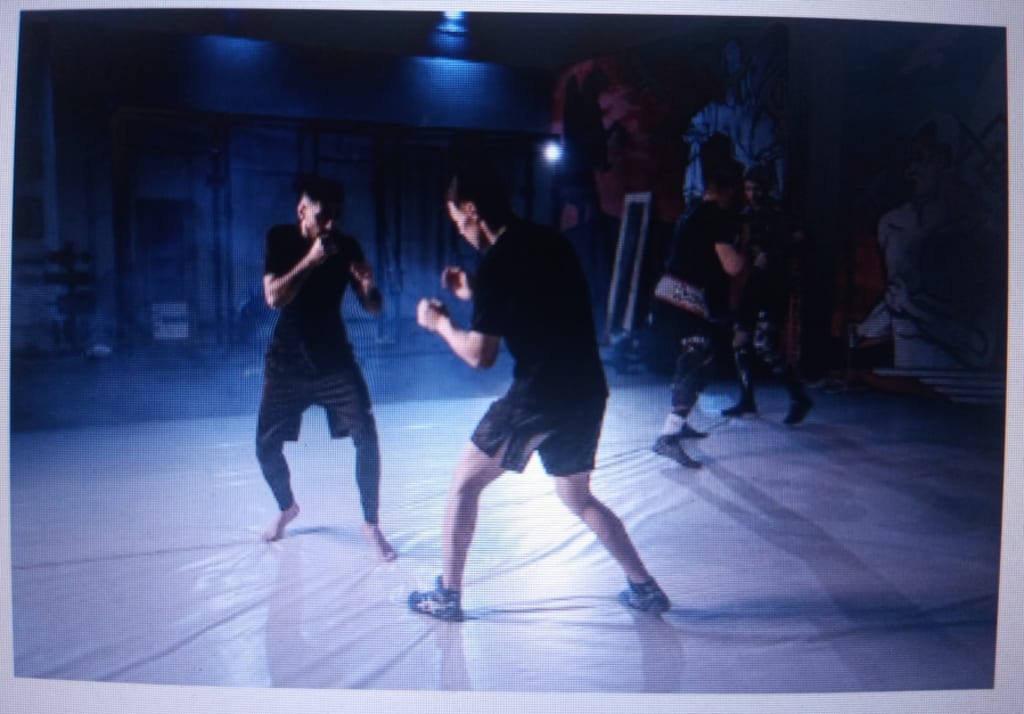Why fake punches in movies look real
Unveiling the Illusion: The Art of Making Fake Punches Look Real in Movies

The other day, I had the opportunity to watch Shang-Chi and I was absolutely captivated by the incredible fight sequence that took place on the bus. It was astonishing how they managed to create such a visceral and realistic experience without causing any actual harm. Although the punches and kicks were not genuine, they felt incredibly authentic. This left me curious about the techniques they used to achieve such impressive action scenes.
To satisfy my curiosity, I reached out to Wade Eastwood, a highly skilled second unit director and stunt coordinator. Wade has an extensive background in working on some of the most remarkable action movies of the past decade, including serving as Daniel Craig's stunt double in the 2008 film Quantum of Solace. Before stepping onto the set, Wade and his team engage in meticulous preparation and previsualization, similar to the VFX pre-vis commonly seen in Marvel films.
However, in the world of stunts, they take it a step further by creating what I call "action vis." This involves shooting live footage using the appropriate cameras. During this process, sets are constructed using boxes, and stuntmen take on the lead roles to figure out the action choreography and camera angles in a safe environment. Once the movie is ready to be filmed, the main unit focuses on capturing the dramatic and acting scenes, while my unit takes charge of shooting all the action sequences.
Let's deconstruct a fight into its most fundamental element: a punch. Selling a convincing punch requires collaboration between both parties involved—the person throwing the punch (the A-side) and the person receiving it (the B-side). If the puncher executes their movement and performance flawlessly but the recipient delivers a lackluster reaction, the impact falls flat. Both individuals need to give their all, despite the fact that they aren't actually striking each other. This is crucial to avoid the appearance of fakeness. By strategically arranging the actors and stunt performers and manipulating the camera angles, we create the illusion of close contact without compromising safety.
However, there are instances when actual contact is necessary to sell the authenticity of a scene. For example, Michael B. Jordan explained during an appearance on the Graham Norton Show that when filming in slow motion, faking the impact becomes impossible. Consequently, real punches were thrown to maintain the visual integrity of the scene.
In terms of the person receiving the hit, they play a significant role in selling the power of the punch. A small hit may leave them seemingly unaffected, but a more substantial blow can send them tumbling to the ground, creating a more impactful visual. Falling correctly and safely requires its own set of skills. Just like in a car crash, the energy needs to be dissipated gradually throughout the body to prevent severe injury. By distributing the force across different parts of the body, such as the forearm, shoulder, and back, the impact is lessened. Carefully placed hidden padding helps mitigate the potential for harm, allowing for multiple takes and enhancing the illusion of a hard impact.
During post-production, additional tricks are employed to amplify the impact of hits. By removing frames where the fist is supposed to connect, the audience's brain fills in the gap, making the hit appear more powerful. Visual effects can also be utilized to extend a punch or make it appear as if it connects with the face, further enhancing the perceived force. Sound design plays a crucial role as well, providing clarity and emphasis on whether a strike lands or misses, contributing to the overall intensity of the fight.
While a visually stunning fight can be impressive, it ultimately lacks excitement if there are no stakes involved. Some fights, like those in the Avengers movies, where heroes effortlessly defeat armies of villains, can lose their impact. However, when fights are grounded in a meaningful narrative, emotional journey, or pivotal moment, they become truly
exhilarating. A fight gains excitement when it serves a purpose beyond mere spectacle, evoking genuine emotions and capturing the audience's attention.
And with that, the intricate process of creating compelling fight sequences comes to a close. It's a combination of skilled choreography, camera work, collaboration between performers, strategic use of props and padding, post-production techniques, and the underlying narrative that gives fights their authenticity and thrill.





Comments
There are no comments for this story
Be the first to respond and start the conversation.